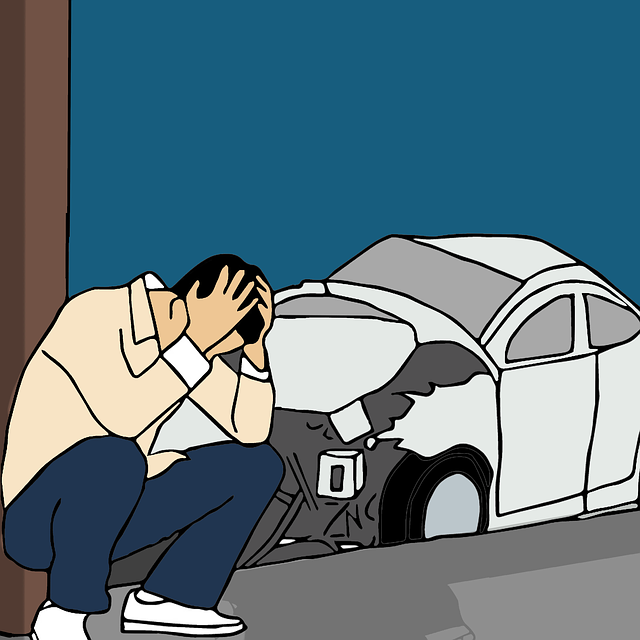Manufacturing Defect Lawyer: Holding Companies Accountable for Product Safety

Manufacturing defect lawyers play a vital role in safeguarding consumers and employees from product-…….
In the intricate web of modern manufacturing, ensuring product quality has become an art and a critical aspect of global business. At the forefront of this quality assurance realm stands the manufacturing defect lawyer—a strategic practice dedicated to safeguarding consumers, fostering industry accountability, and driving continuous improvement. This comprehensive article aims to dissect the multifaceted world of manufacturing defect law, exploring its evolution, impact, and future trajectory. By delving into various facets, from legal frameworks to technological innovations, readers will gain invaluable insights into how this field ensures product safety and drives economic growth.
A manufacturing defect lawyer is a specialized legal practice focused on addressing issues related to product defects during or after manufacturing. This area of law plays a pivotal role in holding manufacturers accountable for producing goods that meet established safety standards and consumer expectations. At its core, it involves the examination of product design, manufacturing processes, quality control measures, and liability implications.
Historically, the concept has its roots in the industrial revolution when mass production techniques emerged, leading to a surge in product-related injuries and health concerns. As a response, legal frameworks evolved to protect consumers and establish responsibilities for manufacturers. Over time, the scope of manufacturing defect law expanded to include not only physical harm but also economic losses resulting from defective products.
Key Components:
The influence of manufacturing defect law extends far beyond national borders, as globalized markets have interconnected economies and consumers worldwide. Here’s an overview of its international impact:
Trends Shaping the Future:
The manufacturing defect lawyer has a profound economic impact, influencing market dynamics, investment decisions, and overall business strategies.
Technology plays a pivotal role in transforming the landscape of manufacturing defect law, offering innovative solutions to age-old challenges.
Key Technological Breakthroughs:
| Technology | Impact | Applications |
|---|---|---|
| Internet of Things (IoT) | Enables real-time monitoring and data collection during manufacturing, enhancing product tracking and quality control. | Smart sensors can detect anomalies in production processes, predict equipment failures, and ensure product integrity. |
| Advanced Quality Control Imaging | Utilizes high-resolution imaging and computer vision to identify microscopic defects that traditional methods might miss. | Automated inspection systems can inspect complex products like electronics and automotive components with unparalleled precision. |
| Machine Learning (ML) | Powers predictive analytics, allowing manufacturers to anticipate potential defects based on historical data and patterns. | ML algorithms can identify trends in product failures, enabling proactive quality improvements and targeted inspections. |
| Robotic Process Automation (RPA) | Automates repetitive tasks in quality control, reducing human error and improving efficiency. | RPA bots can perform data entry, document review, and other administrative tasks, freeing up human resources for more complex analysis. |
These technological advancements not only improve product quality but also streamline legal processes by providing robust evidence and efficient documentation.
Legal frameworks form the backbone of manufacturing defect law, with various policies and regulations governing different aspects of product liability.
Key Global Policies:
Regional Variations and Implications:
Despite its significance, the manufacturing defect lawyer faces several challenges and criticisms that require strategic solutions.
Common Challenges:
Proposed Solutions:
Exploring successful applications of manufacturing defect law through case studies provides valuable insights into its practical impact.
Case Study 1: Johnson & Johnson’s Baby Powder Settlement (USA)
In a high-profile case, Johnson & Johnson faced numerous lawsuits alleging that its baby powder was contaminated with asbestos, causing mesothelioma. The company initially denied the claims but eventually settled for a substantial amount. This case demonstrated the power of manufacturing defect law in holding corporations accountable and protecting consumer health.
Case Study 2: Toyota’s Recall and Quality Improvement (Global)
Toyota’s massive recall in 2009-2010, affecting millions of vehicles worldwide, was a result of an accelerator pedal issue. The company worked closely with regulatory bodies and faced strict liability requirements. Post-recall, Toyota implemented extensive quality control measures, including global quality assurance standards, to prevent similar incidents.
Lessons Learned:
The future of manufacturing defect law is brimming with opportunities and challenges, shaped by technological advancements and evolving global dynamics.
Potential Growth Areas:
Emerging Trends:
Manufacturing defect law is an intricate field that navigates the delicate balance between global commerce and consumer protection. As products become increasingly complex and interconnected, the role of this legal practice becomes more critical. By understanding historical contexts, global trends, economic implications, and technological advancements, practitioners and policymakers can shape a robust framework for quality assurance.
The future holds immense potential for innovation in manufacturing defect law, with technology leading the way to more efficient, effective, and globally harmonious practices. As the world continues to evolve, this field will play an indispensable role in ensuring product safety, fostering industry accountability, and promoting economic growth that benefits all stakeholders.
Q: How do I know if a product has a manufacturing defect?
A: A manufacturing defect is an issue that deviates from the intended design or performance specifications. It may cause harm, reduce product lifespan, or fail to meet safety standards. Look for unusual functionality, visual imperfections, or reports of similar issues from other consumers.
Q: What are my legal rights if I suspect a defective product?
A: Your rights vary by jurisdiction but generally include the right to seek compensation for injuries or losses, request a product recall, or initiate legal action against the manufacturer. Consulting a manufacturing defect lawyer is advisable to understand your specific rights and options.
Q: Can technology completely replace human inspection in quality control?
A: While technology can automate many aspects of quality control, it rarely replaces human oversight entirely. Human inspectors are crucial for complex decision-making, identifying unique defects, and ensuring overall product quality. Technology enhances their capabilities rather than replacing them.
Q: How do global supply chains impact product defect liability?
A: Global supply chains introduce complexity by involving multiple manufacturers and suppliers, making it challenging to pinpoint the source of a defect. Legal frameworks must address these complexities, often employing international agreements and standardized liability rules to ensure accountability throughout the chain.
Q: What is the role of consumer awareness in manufacturing defect law?
A: Consumer awareness is a powerful tool for driving quality improvement. Informed consumers can report defects, influence product design changes, and hold manufacturers accountable. It promotes transparency and encourages companies to prioritize product safety and quality.

Manufacturing defect lawyers play a vital role in safeguarding consumers and employees from product-…….

A manufacturing defect lawyer is crucial for consumers facing product-related injuries or losses due…….

Manufacturing defect lawyers play a crucial role in product liability cases, addressing legal comple…….

In the intricate world of manufacturing, where product quality and safety hinge on technical standar…….

Manufacturing defects, from design variations to process errors, pose severe risks in industrial, co…….

Manufacturing defects can cause sudden product failures leading to severe injuries or worse, necessi…….

A manufacturing defect lawyer is a crucial advocate for consumers harmed by unsafe products. They ex…….

Manufacturing defects can lead to serious injuries and property damage, prompting legal compensation…….

Manufacturing defect lawyers are crucial in protecting consumers from unsafe products, especially in…….

A manufacturing defect lawyer is an expert in protecting consumer safety and justice by holding manu…….